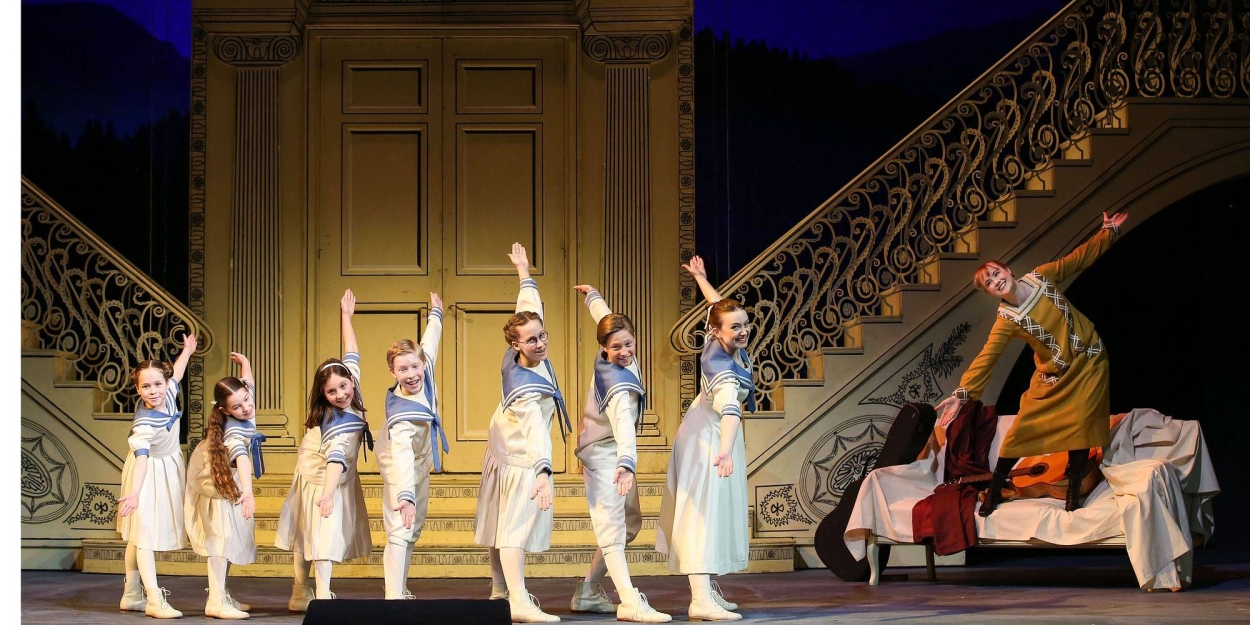Student Blog: Do-Re-Mi… H?
How I discovered a new musical note while watching The Sound of Music in Austria.

One of the most exciting things about studying abroad is getting to experience a new culture. Last week, I saw The Sound of Music in Austria. It felt fitting given that it’s set in Austria (though fun fact apparently Austrians typically either don’t know the story or dislike it).
The theater, Volksoper Wien, was a short 10 minute bus ride from where I live. Built in the late 19th century, it is a gorgeous venue with a massive stage (55x62ft). I couldn’t find the proscenium height, but my best guess is around 30 feet tall.
Though experiencing theatre is a somewhat constant experience, many things differ from theatre in America. The first notable difference is the ticket price. In the States, this ticket would have cost at least $60. In Austria, I paid 15 euro for my ticket. Though it was the second cheapest ticket (second only to standing room), I was satisfied with my seat. I was 20 rows back, under the balcony, but I had a nearly perfect view of the stage. I could have gotten a close side seat for the same price, but I chose an orchestra seat in order to have a clear view of the surtitles.
Speaking of, the show was performed almost entirely in German. My one week of German class helped me understand a few words (mainly the numbers), but the surtitles, displayed above the stage, were definitely necessary. They helped me better understand the lines, but they did not provide a complete translation. Sometimes, the audience would laugh at a joke spoken in German, but I wouldn’t understand because that line was omitted from the subtitles. Luckily, I know the show and saw a production of The Sound of Music a few years ago in the States, so I understood the plot, but I still found it frustrating. The most obvious difference was a lyric change in “Do-Re-Mi.” Instead of using solfege, they sang “C-D-E,” and each pneumonic was changed to reflect the note name (for example “D like the fast D-Tram”). This change shocked me since I am so used to “Do-Re-Mi,” but it did lead me to learn something about Austrian music: the existence of “H” in the musical alphabet.
“H” can be traced back to Gregorian Chant, before key signatures. Tritones (like F natural to B natural) were avoided in compositions, because they did not fit the music’s aesthetic. B flat was typically played in lieu of B natural. When written, B flat was just notated as B (side note - this is where the flat symbol comes from). On the off chance that a B natural was used, it was denoted with a square b (the origin of the modern natural symbol). Eventually, once key signatures and the twelve tone scale emerged (and a printing press was used to create sheet music), composers needed a better way to denote B natural. The note H came out of this time. Today, it is still used by many central European countries.
This week, I’m going to see The Magic Flute (Die Zauberflöte) in German and Same Time, Next Year in English! I’m excited to compare international theatre to American theatre when it’s performed in English and the language is no longer a barrier. I plan to watch many more performances in German throughout the semester in order to learn more about Austrian culture and improve my understanding of the German language.
Comments
Videos


